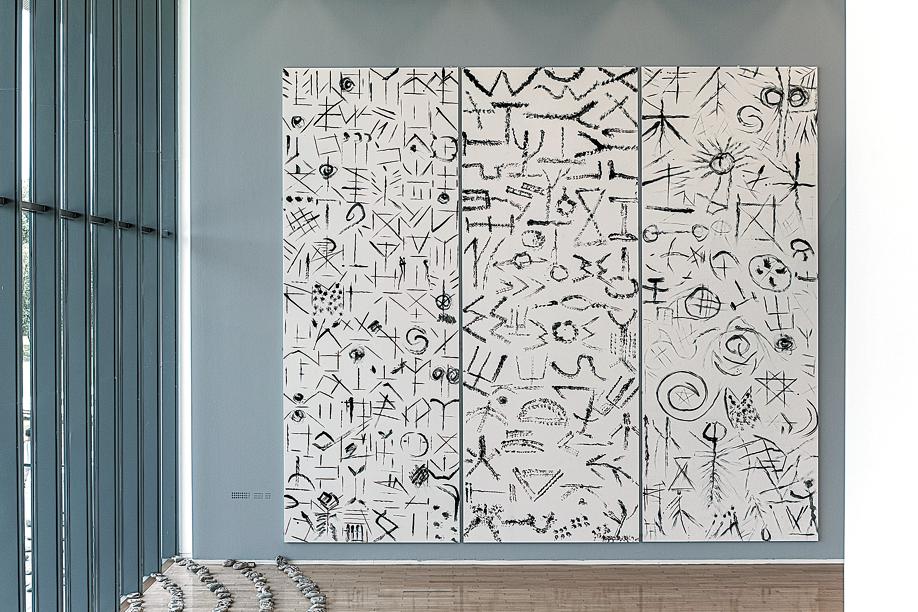

In China, there has always been a fine line between language and calligraphy. From the oracle bone inscriptions to the scripts that are widely adopted today, the transformation of Chinese characters and that of calligraphy seem to closely interact with one another.
Fascinated by such dynamics, artist Lu Junzhou is driven to explore their extremes by using his avant-garde calligraphy style to present the prehistoric pictographs-created even before written Chinese-with his Liangzhu Writing exhibition at the Liangzhu Culture and Arts Center in East China's Zhejiang province.
Open from July 6 to Sunday, the exhibition celebrated the two-year anniversary of the Archaeological Ruins of Liangzhu City being granted UNESCO World Heritage Site status.
At the ruins, which provide evidence of Chinese civilization's 5,000-year history, a seminal discovery was that many artifacts, such as receptacles and tools made of ceramic and stone, were found inscribed with pictographs.
Although their meanings are yet to be deciphered, many experts believe that these inscriptions, if not the precursor of Chinese characters, were at least symbols with communicative functions used by ancient Liangzhu residents to convey certain messages.
When Lu was invited on a field trip to the archaeological ruins and Liangzhu Museum, he was awed by the aesthetics of the sites and the pictographs, both of which revealed to him a kind of crude beauty.
"Our language and words are being constantly enriched, but it seems to me that it's getting harder and harder to express ourselves without misapprehension," Lu says.